Welcome to our comprehensive guide on narrow locks! In this blog, we will unlock the secrets of narrow locks, providing you with a detailed understanding of their definition, purpose, installation, maintenance, and troubleshooting. Narrow locks play a vital role in securing doors with limited width or narrow frames, and by exploring their various aspects, you’ll gain valuable insights into their functionality and how to make the most of these specialized locks. Whether you’re a homeowner, business owner, or simply curious about narrow locks, this guide will equip you with the knowledge needed to navigate the world of narrow locks with confidence. So let’s delve into the intricacies of narrow locks and discover the key to securing your narrow doors effectively.
What are narrow locks? A definition and overview of their purpose.
Narrow locks, also known as narrow door locks or narrow-style locks, are specifically designed locks that are used in situations where space is limited or where narrower door frames or panels are present. These locks are characterized by their compact size and streamlined design, which allows them to fit into tight spaces without compromising security.
The primary purpose of narrow locks is to provide reliable and effective security for doors that have limited width or are built with narrow frames. These locks are commonly used in various settings, including residential homes, apartments, offices, storage units, cabinets, and other similar applications where space constraints exist.
Narrow locks typically feature a cylinder mechanism that includes a key-operated locking mechanism and a latch or bolt. When the key is turned, the bolt extends or retracts, allowing the door to be securely locked or unlocked.
Narrow lock classification
These locks are designed to be easy to install and operate within the restricted space available. They come in various styles and finishes to suit different aesthetic preferences and can be found in both mechanical and electronic variants, depending on the desired level of convenience and security.
SDH offers a range of narrow lock types to meet different security and door hardware requirements. Here are the key features and specifications of each narrow lock type:
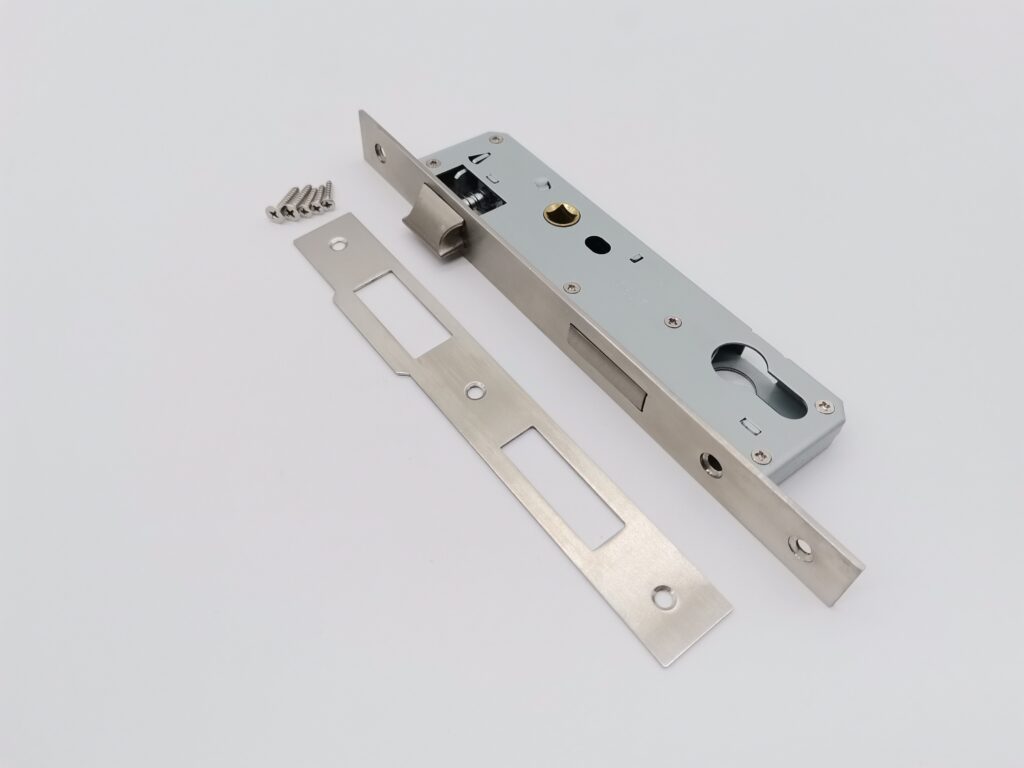
Narrow sashlock -Deadbolt single turn
Center to center distance: 85/92mm
Backset: 20/25/30/35mm
Latch/deadbolt: Zinc alloy/ SS304
Forend/ striking plate: SS201/ SS304
Deadbolt 1 turn 13mm

Narrow sashlock -Deadbolt single turn
Center to center distance: 85/92mm
Backset: 20/25/30/35mm
Latch/deadbolt: Zinc alloy/ SS304
Forend/ striking plate: SS201/ SS304
Deadbolt 1 turn 13mm
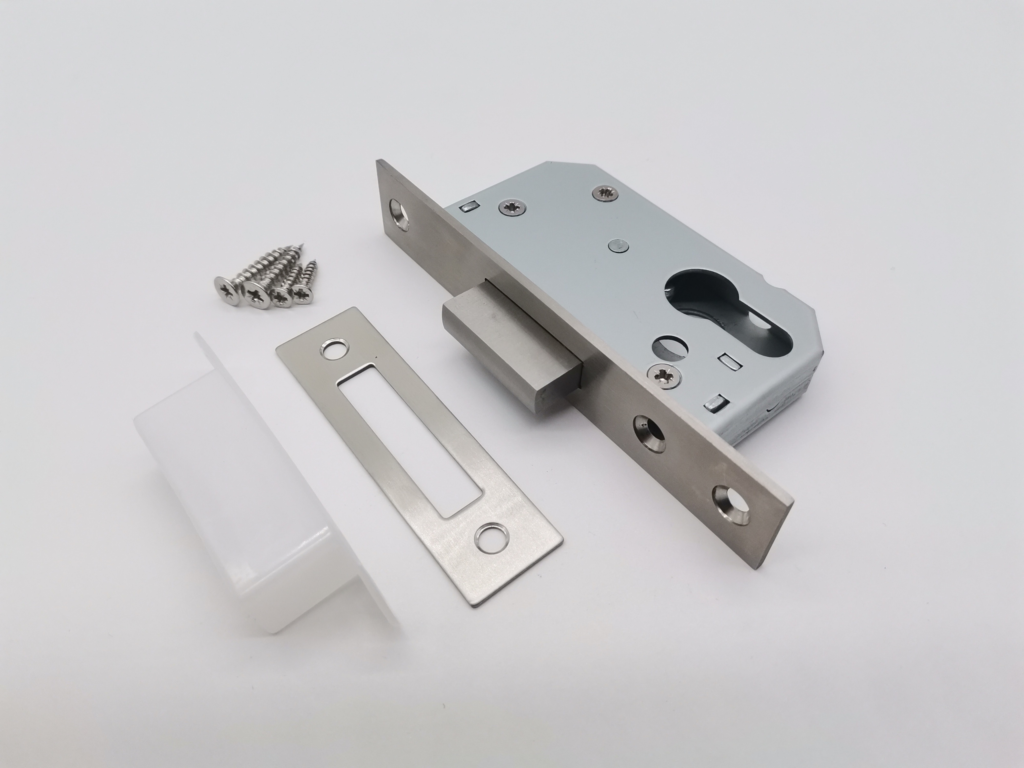
Narrow style deadbolt lock
Backset: 30/35 mm
Deadbolt: SS304
Forend/ striking plate: SS304
Deadbolt 1 turn
Can be used as aluminium door floor lock
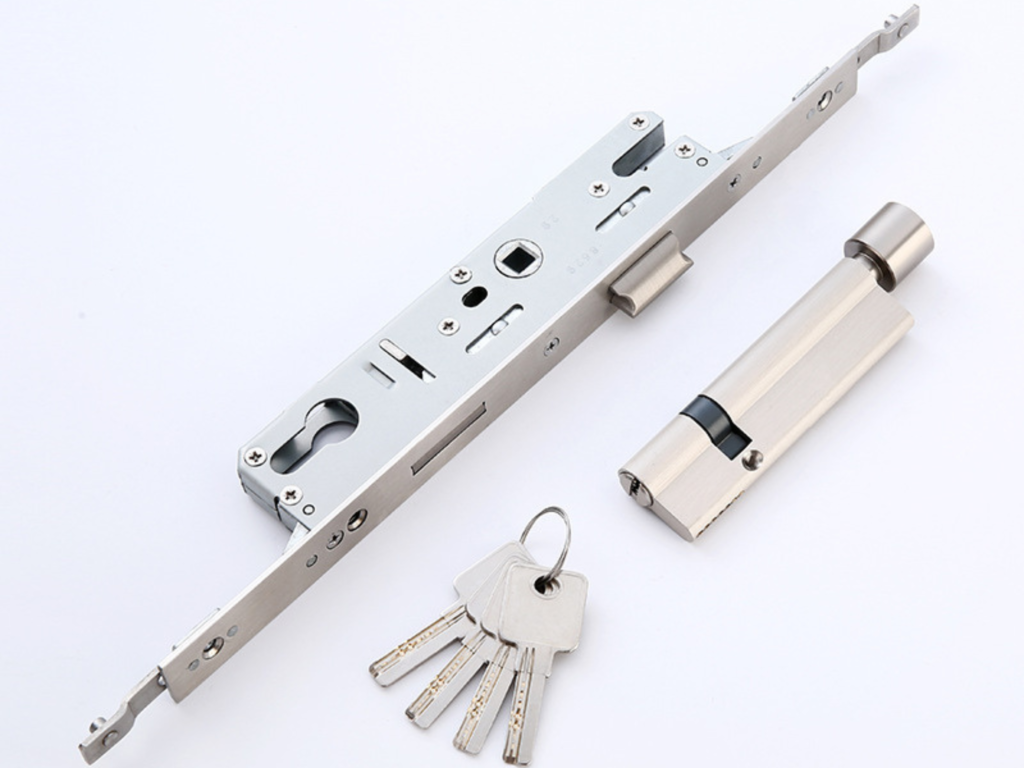
Narrow Style Multi-point Lock
Center to center distance: 85/92mm
Backset: 30/35mm
Latch/deadbolt: Zinc alloy
Forend/ striking plate: SS201/ SS304
Deadbolt 1 turn
These narrow locks are designed to provide reliable security and are suitable for various door types and applications. They are available with different backset options, latch/deadbolt materials, and forend/striking plate materials, allowing you to choose the lock that best meets your specific needs.
To get a quote for any of these narrow lock types, you can contact SDH to select the appropriate narrow lock and to obtain accurate prici ng information.
Factors to consider when choosing the right narrow lock
When selecting a narrow lock, it’s essential to consider various factors to ensure it meets your security needs, suits the door type, and fulfills architectural requirements. Here are the key factors to consider:
Security Needs: Assess the level of security required for the application. Determine if the lock is for residential, commercial, or industrial use and consider factors such as the value of the contents being protected, the level of foot traffic, and the potential threats or risks. Choose a narrow lock that provides an appropriate level of security, such as one with strong construction, reliable locking mechanisms, and resistance against picking, drilling, or tampering.
Door Type: Consider the type of door on which the narrow lock will be installed. Is it an interior or exterior door? Is it a sliding door, swinging door, or cabinet door? Each door type may have specific requirements for lock installation. Pay attention to the door’s thickness, material (wood, metal, etc.), and the existing hardware on the door to ensure compatibility with the chosen narrow lock.
Architectural Requirements: Evaluate the architectural requirements and aesthetics of the door and its surroundings. Consider factors such as the door’s design, finish, and overall style. Choose a narrow lock that complements the door’s aesthetics and maintains the desired architectural appeal. There are various finishes and styles available, including different metal finishes and decorative elements.
Building Codes and Regulations: Familiarize yourself with any local building codes, regulations, or standards that may dictate the type of lock permissible for your application. Some buildings or locations may have specific requirements for locks, such as fire safety codes or accessibility standards. Ensure the selected narrow lock meets all necessary regulations to ensure compliance.
Durability and Maintenance: Evaluate the durability and maintenance requirements of the narrow lock. Consider factors such as the expected frequency of use, exposure to environmental elements, and the need for regular maintenance. Choose a lock that is built to withstand the intended usage conditions and is easy to maintain over time.
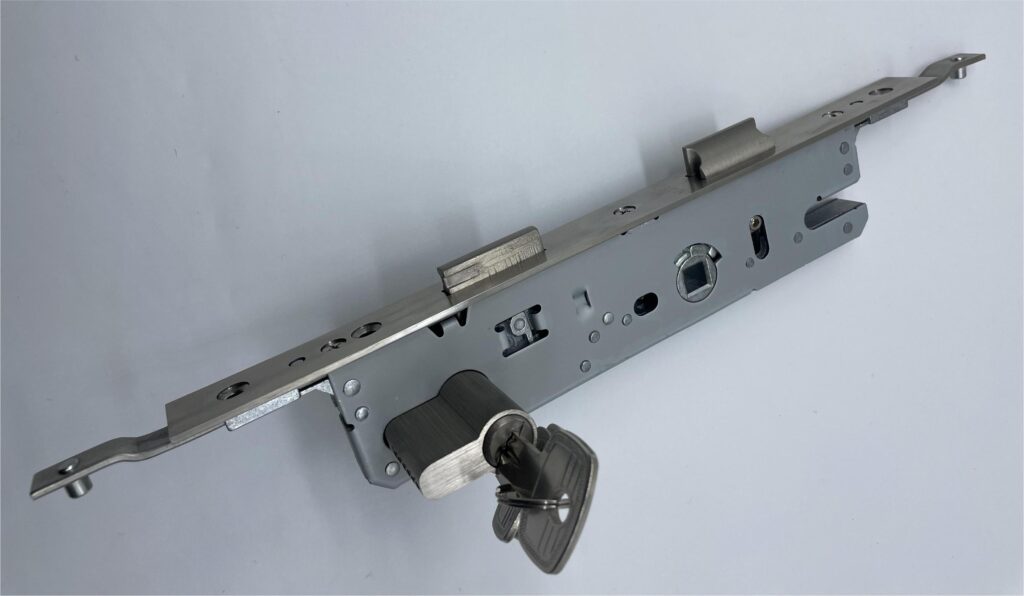
How to maintain narrow lock?
Regular Cleaning: Keep the narrow lock clean by periodically wiping it with a soft cloth. This helps remove dust, debris, or any buildup that may affect its operation.
Lubrication: Apply a small amount of graphite-based lubricant or lock-specific lubricant to the keyway and other moving parts of the lock. This helps maintain smooth operation and prevents rust or corrosion.
Check Alignment: Periodically check the alignment of the lock and ensure it remains centered and level. If the lock becomes misaligned, it may hinder proper locking and unlocking. Adjust or tighten the mounting screws if necessary.
Inspect and Replace Parts: Regularly inspect the lock for any signs of wear, damage, or malfunctioning components. Pay attention to the key, key pins, driver pins, and bolt/latch. If any part appears worn or damaged, consider replacing it promptly to maintain optimal security.
Seek Professional Assistance: If you encounter any issues or have concerns about the lock’s performance, it’s advisable to consult a professional locksmith or technician. They can provide expert guidance, perform maintenance tasks, or handle any necessary repairs.
By following these installation and maintenance practices, you can ensure the proper functioning and longevity of your narrow lock, maximizing its security and convenience benefits. Always refer to the specific instructions provided by the lock manufacturer for detailed guidance on installation and maintenance procedures.
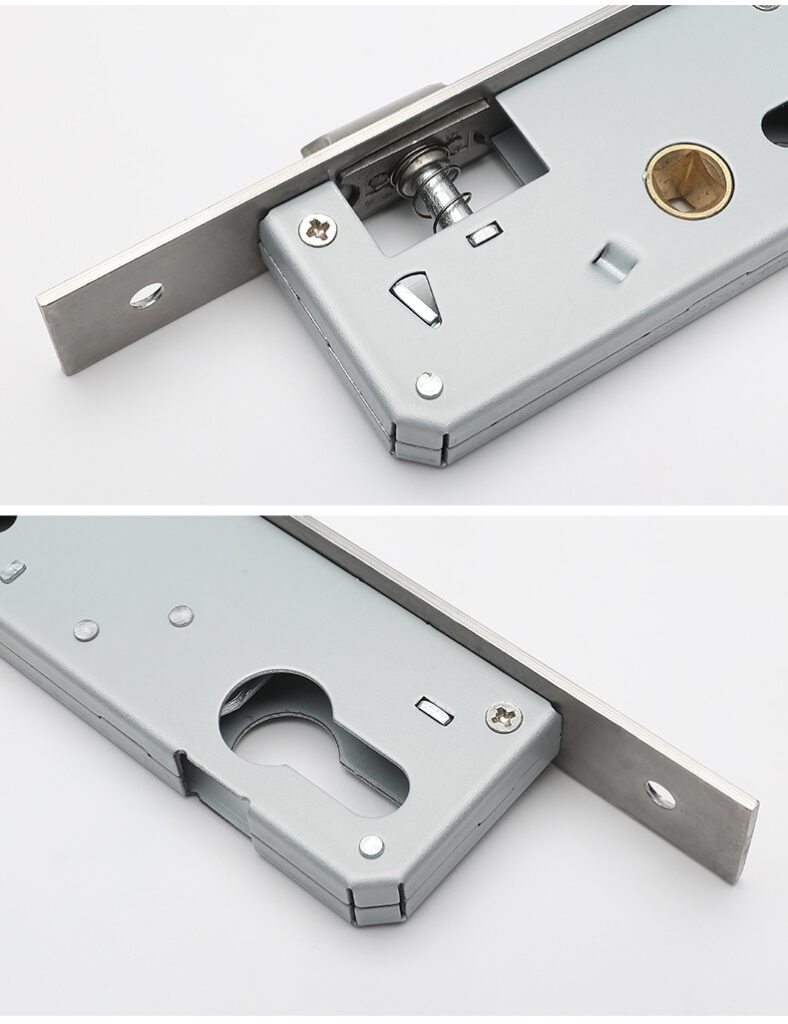
Troubleshooting and Common Issues:
Key Doesn’t Turn:
Ensure you are using the correct key for the lock.
Check for any debris or obstructions in the keyway and clean it if necessary.
Lubricate the lock with graphite-based or lock-specific lubricant.
If the key still doesn’t turn, there may be an issue with the lock’s internal mechanism. Consult a professional locksmith for further assistance.
Key Turns, but Lock Doesn’t Operate:
Check if the lock’s bolt or latch is properly aligned with the strike plate.
Verify that the lock is securely mounted to the door and not loose.
Inspect the key pins and driver pins for any damage or misalignment. If needed, consider replacing them.
If the issue persists, the lock may require professional repair or replacement.
Difficulty Inserting or Removing the Key:
Check if the key is clean and free of debris. If necessary, clean the key with a soft cloth.
Inspect the keyway for any dirt or obstruction and clean it if needed.
Lubricate the keyway and key with graphite-based or lock-specific lubricant.
Avoid using excessive force while inserting or removing the key, as it may cause damage. Gently wiggle the key if it’s stuck.
Loose or Misaligned Lock:
Tighten the mounting screws of the lock to ensure it is securely attached to the door.
Verify that the lock is centered and level. Adjust the position if necessary.
If the lock remains loose or misaligned, consider using longer screws or additional mounting hardware for better stability.
Key Breaks Inside the Lock:
Remain calm and avoid attempting to remove the broken key forcefully, as it may cause further damage.
Use a pair of tweezers or needle-nose pliers to gently extract the broken key fragment.
If you’re unable to remove the key fragment, it’s best to seek assistance from a professional locksmith to avoid causing damage to the lock.
If these troubleshooting steps do not resolve the issue, or if you encounter more complex problems with your narrow lock, it is recommended to contact a professional locksmith for expert assistance and guidance. They have the knowledge and tools to diagnose and fix lock-related issues effectively.
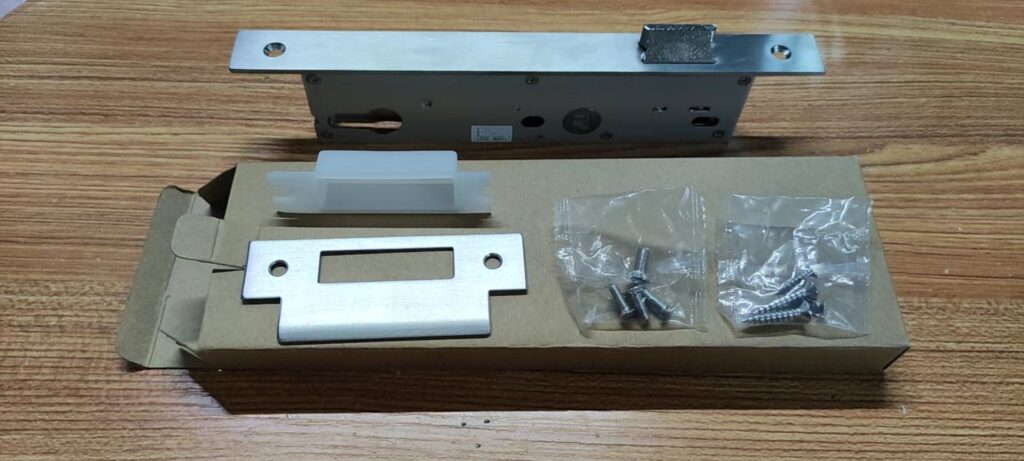
Conclusion
By delving into the secrets of narrow locks through this comprehensive guide, you’ve gained a deeper understanding of their components, installation, maintenance, and security considerations. With this knowledge, you’re better equipped to make informed decisions regarding narrow locks and their role in securing doors with limited width. Remember, consult with professionals when needed to ensure the best practices are followed and to address any specific concerns or requirements in your unique security setup.


